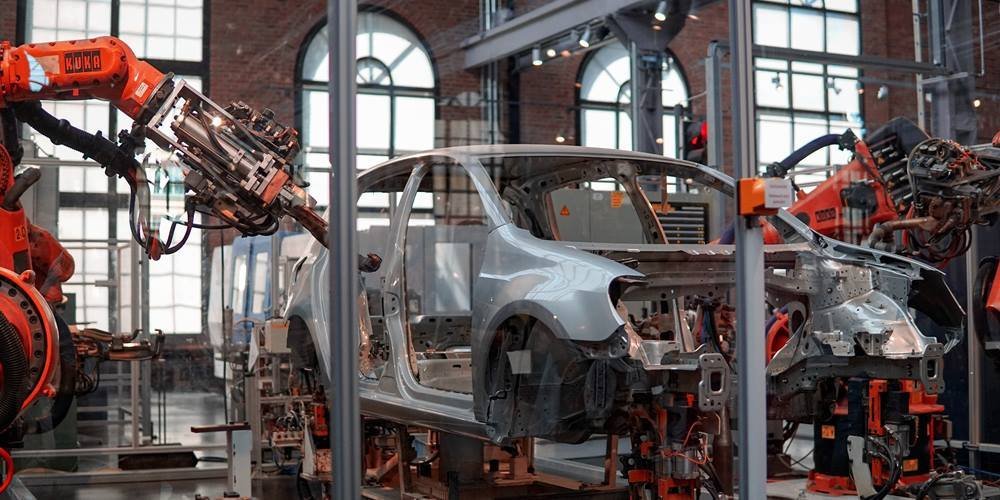Understanding the Different Types of Commercial Real Estate

When you think of commercial real estate, the first thing that comes to your mind is office space, right?
Industrial real estate is not something that is thought of. But commercial real estate experts know not to underestimate the power and importance of industrial real estate.
Deals made in this branch may not be as extravagant as the ones in office and retail spaces, industrial real estate has stability and is a good long-term investment choice. However, there is one condition before you get involved in industrial real estate – you need to be (or at least hire) an expert.
The foundation of industrial real estate knowledge starts with understanding the basics, so let’s start with them. Here are the most common types of industrial real estate in the United States.
[newsletter]
Manufacturing
Also known as heavy industrial buildings, manufacturing facilities have specialized equipment that is required for the production of goods and materials. They have access to high capacity electrical power, and often contain floor drains, cranes, storage tanks, advanced exhaust and ventilation systems, and more.
Light assembly
Light assembly spaces are small and simple. They are usually the place where products are assembled from smaller parts, temporarily stored and later shipped off to customers. They can be easily reconfigured to fit different tenants needs.
Heavy manufacturing
Heavy manufacturing spaces are used for production of heavy-duty goods and/or materials. Their sizes go from tens of thousand (and more) of square feet in usable space, and have powerful equipment, lots of space for trucks and three-phase electrical power.
The exact equipment and machinery inside is customizable to fit the occupying company needs, so heavy manufacturing plants need to be remodeled and renovated when owners/tenants are changed.

Storage and distribution
Manufacturing sites are properties where goods are being made, and storage and distribution properties are all about how products are moved and sent to users. Their size can vary, depending on the type of property, but the general rule is that they tend to be around 20 percent of office space, at most.
Distribution warehouse
Distribution warehouses are mostly used to ship goods, which implies that location largely matters. If you want to have quick access to your products, from anywhere in the country, you should choose a warehouse space placed in the middle of the country, ideally near an airport. The size of the company occupying the space can change this opinion.
Amazon occupies several custom-made warehouses, with high tech equipment, some of which are bigger than one million square feet.
General-purpose warehouse
These types of warehouses are more storage oriented, than distribution. Most general-purpose warehouses have a lower door to square footage ratio due to the fact that products are not being moved in and out often. Location in this case doesn’t matter as much as what’s being stored, which is the most common driver of variation in these types of properties.
General-purpose warehouse spaces are often used as cold storage facilities, which are equipped with freezers and are usually used for food storage. These facilities can be the same size as traditional warehouses and have access to trucks and machinery that are required to get the products onto shelves.
Truck terminal
Truck terminals are entirely devoted to transportation. Simply put – they are intermediate sites where goods are loaded to trucks, and usually have very little to no storage space.
Flex space
As you might imagine from its name, flex spaces are able to support a vast variety of different industrial business needs, all within one single building.
There are more specialized flex spaces that serve specific purposes for industrial tenants, and the following are the most common ones.
Datacenter
Data centers are spaces where companies keep their equipment that contains their data, cloud storage and keeping their internet running fast and without interruptions. On average, they have around 100,000 square feet, but can have much bigger space, with the largest data center in the world being located in China and having over 6 million square feet!
The reason why data center sizes vary that much is due to the fact that a large number of companies choose to lease third-party data center space.
R&D
R&D stands for Research and Development, the process in which companies improve existing products and create new ones. These types of property vary significantly, depending on the tenant occupying it.
For instance, Google self-driving car project will require 53 thousand square feet, with lots of indoor testing space away from the public eye. The R&D property functionalities fit Google’s needs perfectly in this case.
Showroom
Showrooms most often have a mix of office spaces, warehouse storage and the most important part – showrooms. More than half of the space is reserved and devoted to showcasing and selling the goods. To make it more understandable for you, the most common example would be a car dealership, but of course, there are many other kinds of businesses that require showrooms and find them beneficial.
Finding the perfect type for you
There are many different types of industrial real estate to choose for your needs. Investing in a space that is too big, or small or under-equipped for your needs can be a big mistake and influence greatly the overall success of your real estate transaction.
Take the time to consider your decision and define exactly what your company needs in order to get the most of the new space and thrive. Only you can decide which type of property will be optimal.
When you’re ready to make the search for ideal industrial space on the next level, you should work with a team that understands your needs and also knows the market deeply. Our experts have a reputable name in the commercial real estate world, and for a good reason. Don’t take our word for it, see it yourself by calling us and scheduling a tour of the space you find the most attractive!




